When your garage door won’t open all the way, it can be quite an inconvenience. Not only will this keep you from getting your vehicle in and out of your garage, you’ll also have a harder time accessing everything you have stored in there.
If this happens to you, don’t immediately call a professional. First take advantage of these tips and see if you can solve the problem yourself. By doing so, you’ll just might save yourself a lot of cash.
Check for obstructions
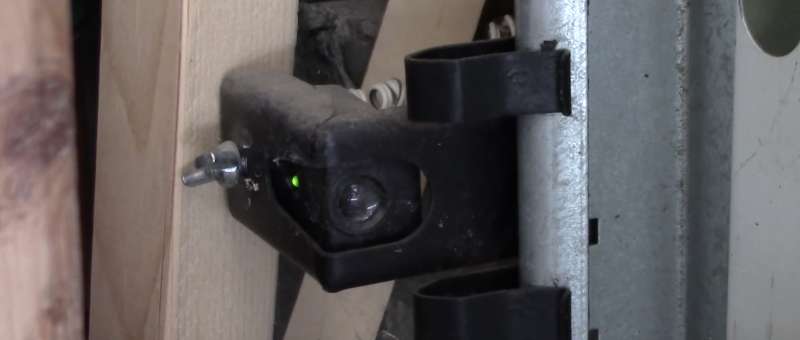
The first thing you’ll want to do when your garage door opens a little and then stops is to check to see if there is anything obstructing the lenses. Your garage door will immediately stop and close if anything is in the field of view of the lenses. It’s also a good idea to take a damp cloth and wipe off the lenses. Over time, spiderwebs, dust, and other filth can accumulate on the lenses causing the garage door to malfunction.
Make sure the photo eyes are not blocked
- Move larger obstructions out of the way: There are two lenses. One of the lenses acts as a transmitter. It sends a beam to the other lens, which acts as a receiver. This second receiver reads the beam, but if something is in the way, the garage door won’t be able to respond.
- Inspect the LED lights on both sides of the sensor: Check to see if one of the LED lights happens to either be flickering or is completely off. If you notice either of these things, the photo eye lens is more than likely faulty. Try and manually re-position the lens to see if it comes back on.
- See if the lenses need to be realigned: Over time, the photo eye lenses on your garage door opener can get bumped into, causing them to become misaligned. What you’ll want to do is equip yourself with a level. Now measure them and ensure that both of the lenses are positioned at the same height.
- Inspect the wiring connecting the sensors: Look and make sure the cord that connects the sensor isn’t disconnected or damaged. Bad weather, water damage, rips, pesky animals, and overuse can cause these wires to become faulty.
Check the lock button

In addition to obstructions, you’ll also want to check the lock button. Most garage door openers have a lock button or a switch that will cause the garage door to stop and sometimes close. If you’re not sure where the controls for this are or how to turn the lock feature on and off, you’ll want to consult the owner’s manual.
Your garage door remote control could be the problem
If, while using the operating remote, your garage door refuses to open or close, the remote could be the issue. There are a few reasons why your remote is not working.
- You may be using the remote from too far of a distance away.
- The signal from the remote could be blocked.
- The antenna connected to your garage door system might be damaged. Inspect your system and make sure that the antenna is not only visible but is also hanging down properly from the motor.
- Check the batteries in the remote.
- Lastly, if the remote is not working properly, it may need to be reprogrammed. Read the owner’s manual to make sure you do it right. Some garage door openers also allow the owner to use an app on their phone to open and close the garage door. Check to make sure you’re not experiencing any problems with this app.
Check to see if your garage door is properly balanced
If you’ve checked for obstructions and made sure your remote is working properly, and still your garage door opener won’t open all the way, check to see if your garage door is balanced properly. If your garage door is not balanced right, it won’t go up or down all the way.
To check the balance, pull the emergency release cord or chain to disconnect the door. You should now be able to move the door up and down by hand.
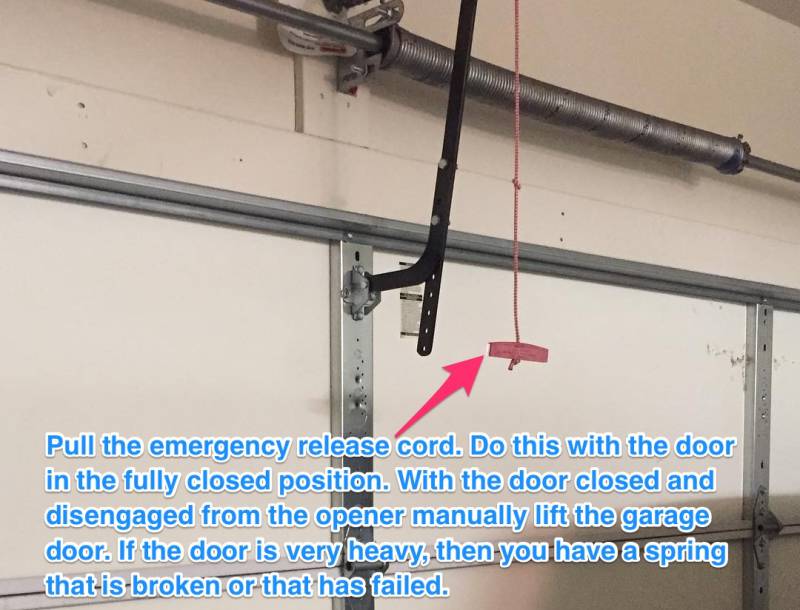
From here, lift the garage door by hand about 3 feet above the ground and then release the door and see were it lands. If the door lands in the same spot you pulled it up from, then you know it’s balanced. However, if it doesn’t, then you know it’s off balance.
Adjusting the simple travel limit and the force limit
If your garage door is off balance, the problem could mean that your opener simply needs to have the simple travel limit or the force limit adjusted.
For those that are unfamiliar with these settings, the simple travel limit setting determines how far up and down your garage door opener will go. The force limit setting determines how much pull will be used to get the garage door fully open.
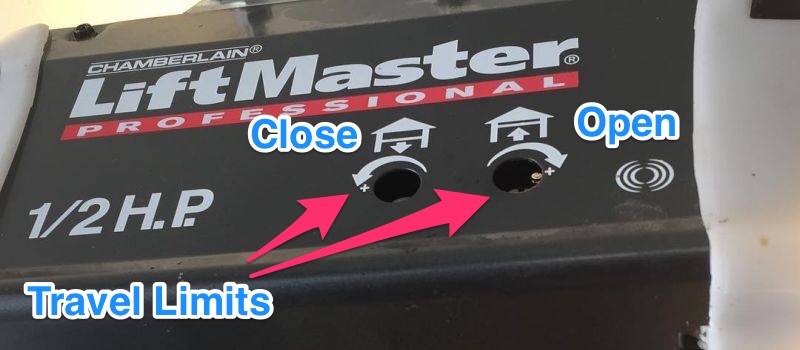
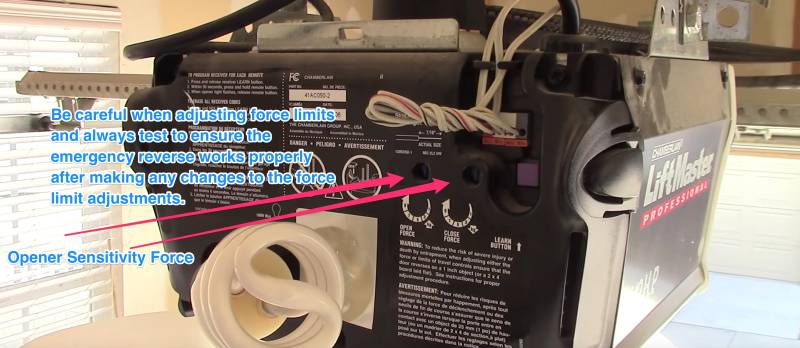
Start by making sure that the emergency reverse works the way it’s suppose to. This is for your own safety and will help prevent your garage door opener from getting damaged as well. After you have made sure this works, locate the release cord and disconnect the garage door if you haven’t already. You’ll need to have the garage door closed to do this.
After you have disconnected the garage door, adjust the simple travel limit or the force limit until your garage door is balanced properly. If you’re unsure how to do this, consult the owner’s manual.
Depending on what brand and model of a garage door opener you have, you’ll make these adjustments by either turning the screws located on the side or pushing the colored buttons. If your garage door still only opens partially, then try adjusting the travel and force settings a little more.
Your garage door might be off track
Take a moment and inspect your garage door. Do you notice a grinding noise when you try and raise it up or down? Does it jerk around or hang in a crooked position? If so, your garage door is probably off track. The first thing you’ll want to do is stop using it immediately. Doing so could cause severe damage.
It’s also important to note that if the door looks as if it’s jammed or stuck, you should by no means manually pull it up or down. This could warp the vertical tracks and possibly pop the rollers out. Once this happens, you really are in trouble. You could be looking at a seriously expensive repair.
If your garage door is doing any of these things listed above, the problem is more than likely a misaligned track. To get your garage door back on track, follow these steps:
- Make sure the garage door is completely closed. If it’s not, carefully pull it down. You’ll also want to turn off the automatic feature for your own safety.
- Loosen the screws that connect the track to the frame.
- Use a rubber hammer to lightly tap the track back into place.
- Once the track is in its proper position, tighten the screws.
- Use a tape measure and make sure the overhead track is the exact distance away from the door as the wall track is.
The best thing you can do is to catch the misalignment issue before it becomes a problem.
Try to inspect your garage door opener at least once a year. Look for bolts and nuts that have become loose. If you notice any, tighten them up. You’ll also want to use a silicone-based lubricant and spray it on the track in addition to the hardware. Doing this will help prevent rust and corrosion. Rust and corrosion can cause the track to become misaligned.
Besides looking for loose nuts and bolts, grinding noises, whining sounds, and slow or jerkiness of the door can also indicate that you have a problem.
Once you notice any of these issues, stop using the opener and fix the problem as soon as you can. This will prevent any further damage and prevent costly repairs. On the other hand, if the track is completely broken, you may need to replace your complete garage door system.
The Springs
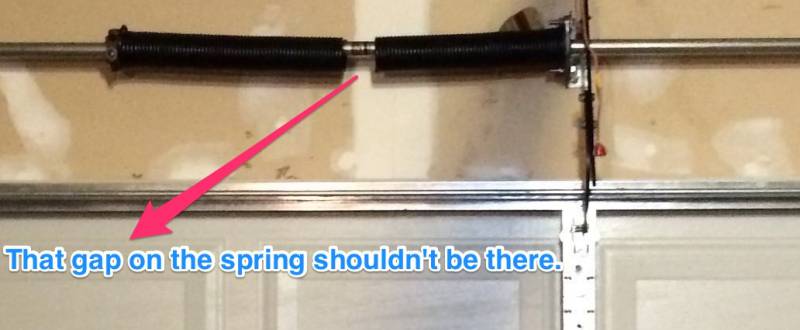
The springs on a garage door opener are made to constantly work under intense pressure. They typically need to be replaced more often than the rest of the parts in the system.
If your garage door springs are broken or simply not working the way they’re suppose to, you’ll want to call a professional unless you really know what you’re doing. Why? Handling these springs can be quite dangerous and have been known to cause injury and in some cases death.
If you’re unsure if these springs need to be replaced, look for these signs:
- The garage door isn’t moving even though the motor is running.
- While manually opening it, the garage door seems to be much heavier than it usually is.
- You see dangling springs hanging from the system.
- You notice that the top portion of the garage door is misaligned.
- You hear straining sounds when the garage door is opening or closing.
A faulty logic board
A faulty logic board could also be a reason your garage door opens then stops. This board electrically controls your garage door and will fail if it shorts out. Depending on how old your garage door opener is, you may want to replace it if it’s old.
On the other hand, if your opener is fairly new, you may want to call a professional. Plus, depending on the brand and model, you may be able to take advantage of the warranty and get it fixed for free.
- What to Do if Your House Smells Like Gas but There’s No Leak - February 6, 2023
- Why Is There a Burning Smell Coming From My Vents? - August 16, 2022
- How to Remove the Musty Smell From Your Air Conditioner - August 16, 2022
